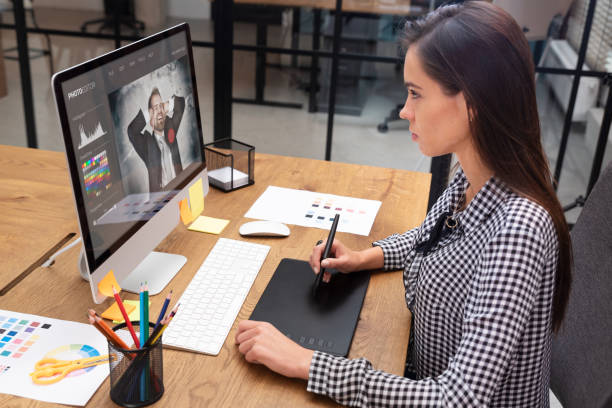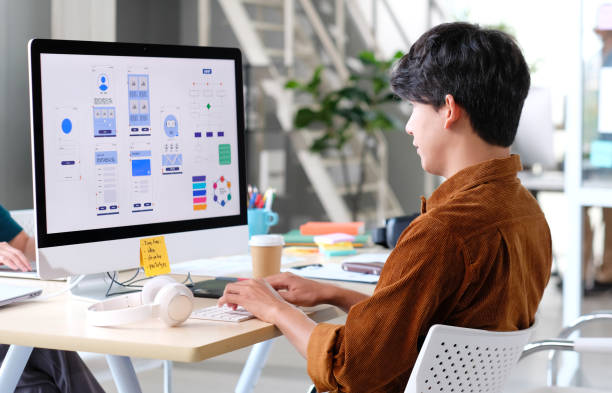In the digital era, having a well-designed website is crucial for businesses and individuals alike. A visually appealing and user-friendly website can significantly enhance your online presence and help achieve your goals. Hiring a freelance web designer can offer flexibility, creativity, and cost-effectiveness. However, finding the right freelance web designer can be a daunting task. This article will guide you through the process of finding a freelance web designer who matches your project requirements.
1. Define Your Project Needs
Before you begin your search for a freelance web designer, it's essential to outline your project needs. Clearly defining the scope of your project will help you communicate your expectations and attract the right candidates. Consider the following aspects:
- Type of Website: What kind of website do you need? (e.g., e-commerce, portfolio, blog, corporate)
- Features and Functionality: What specific features do you want? (e.g., contact forms, payment gateways, user registration)
- Design Preferences: Do you have a particular style or theme in mind? Are there any websites you admire?
- Budget: What is your budget for the project?
- Timeline: What is your desired timeline for project completion?
A well-defined project brief will help potential designers understand your vision and provide accurate proposals.
2. Search on the Right Platforms
There are various platforms where you can find freelance web designers. Each platform has its advantages, and choosing the right one depends on your needs and budget.
- Freelance Marketplaces: Websites like Upwork, Freelancer, and Fiverr are popular for connecting clients with freelancers. You can post your project, review proposals, and choose from a wide range of designers.
- Portfolio Sites: Platforms like Behance and Dribbble allow designers to showcase their work. Browsing through these sites can help you find designers whose style matches your vision.
- Social Media: LinkedIn, Twitter, and Instagram can be valuable resources for discovering talented web designers. Use relevant hashtags and follow industry leaders to find potential candidates.
- Referrals: Personal recommendations from colleagues or friends can lead you to reliable freelance web designers who have proven their skills.
3. Review Portfolios and Case Studies
Once you have a list of potential designers, take the time to review their portfolios. This step is crucial in assessing their design style, creativity, and technical skills. Look for the following elements in their portfolios:
- Diverse Projects: A diverse portfolio indicates versatility and the ability to adapt to different project requirements.
- Consistency: Consistency in design quality across various projects demonstrates reliability and professionalism.
- Relevant Experience: Check if the designer has experience working on projects similar to yours.
- Case Studies: Detailed case studies can provide insights into the designer's problem-solving skills and the impact of their work.
4. Conduct Interviews
After shortlisting a few designers based on their portfolios, schedule interviews to discuss your project in detail. During the interview, focus on the following points:
- Project Understanding: Assess whether the designer understands your project goals and requirements.
- Technical Skills: Ask about their proficiency in web design tools, programming languages, and content management systems (CMS) like WordPress, Shopify, or Wix.
- Communication: Good communication is key to successful collaboration. Ensure the designer is responsive and clear in their communication.
- Workflow: Inquire about their design process, including milestones, revisions, and feedback loops.
- Availability: Confirm their availability to meet your project deadlines.
5. Check References and Reviews
Before making a final decision, it's wise to check references and read reviews from previous clients. This will provide you with a better understanding of the designer's work ethic, reliability, and ability to meet deadlines. You can ask the designer for client testimonials or contact previous clients directly to gather feedback.
6. Discuss Terms and Sign a Contract
Once you've chosen a designer, it's time to discuss the terms of the project and formalize the agreement. Key points to cover include:
- Scope of Work: Clearly outline the tasks and deliverables.
- Timeline: Set realistic deadlines and milestones.
- Payment: Agree on the total cost, payment schedule, and payment method.
- Revisions: Specify the number of revisions included and the cost of additional revisions.
- Ownership: Clarify who will own the final design and source files.
Signing a contract ensures that both parties are aligned and provides a legal framework to address any potential disputes.
7. Collaborate Effectively
Effective collaboration is vital to the success of your project. Here are some tips to ensure smooth cooperation:
- Regular Updates: Schedule regular check-ins to discuss progress and provide feedback.
- Clear Feedback: Provide specific and constructive feedback to help the designer make necessary adjustments.
- Trust: Trust the designer's expertise and be open to their suggestions.
- Be Responsive: Prompt responses to queries and feedback requests can help keep the project on track.
Conclusion
Finding the right freelance web designer can greatly impact the success of your website project. By defining your project needs, searching on the right platforms, reviewing portfolios, conducting interviews, checking references, and collaborating effectively, you can hire a designer who meets your expectations and delivers a high-quality website. Invest time in the selection process, and you'll reap the benefits of a well-designed, professional website that supports your goals.






Comments